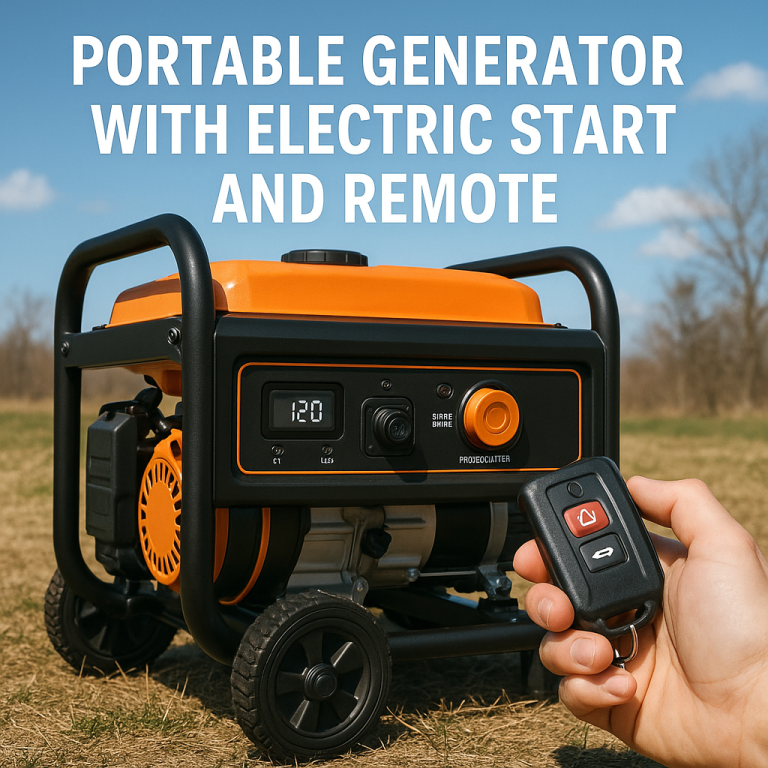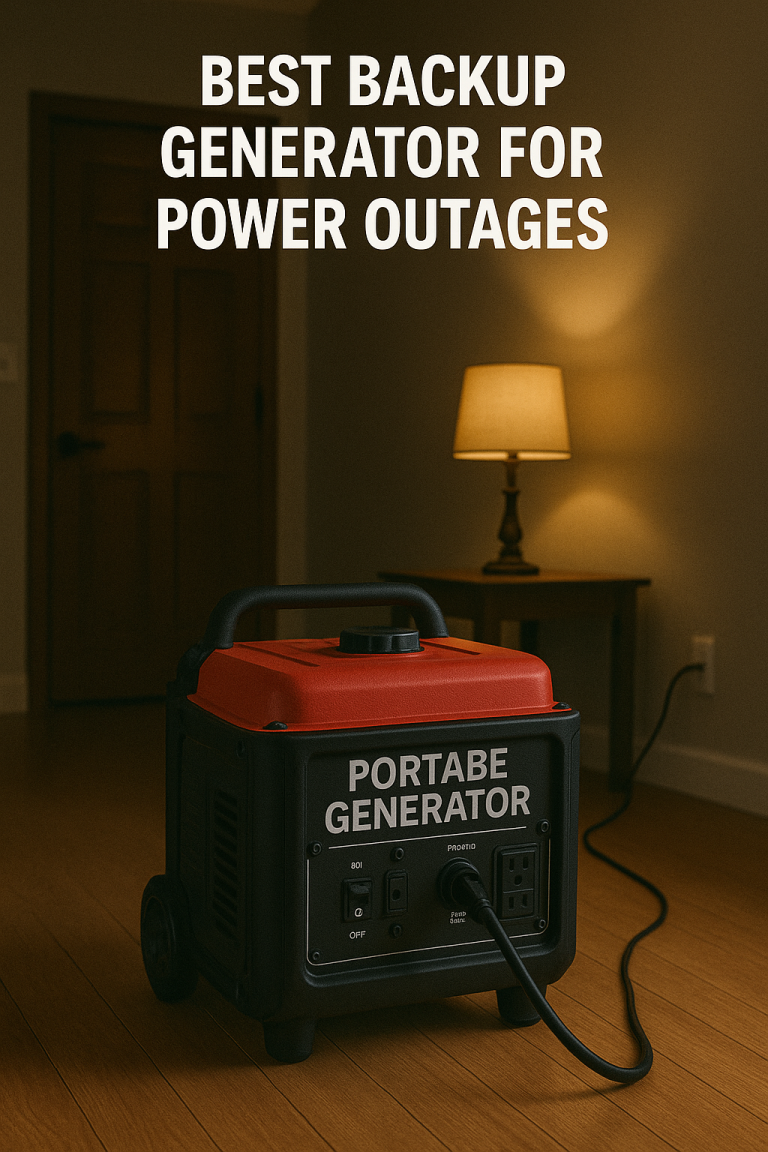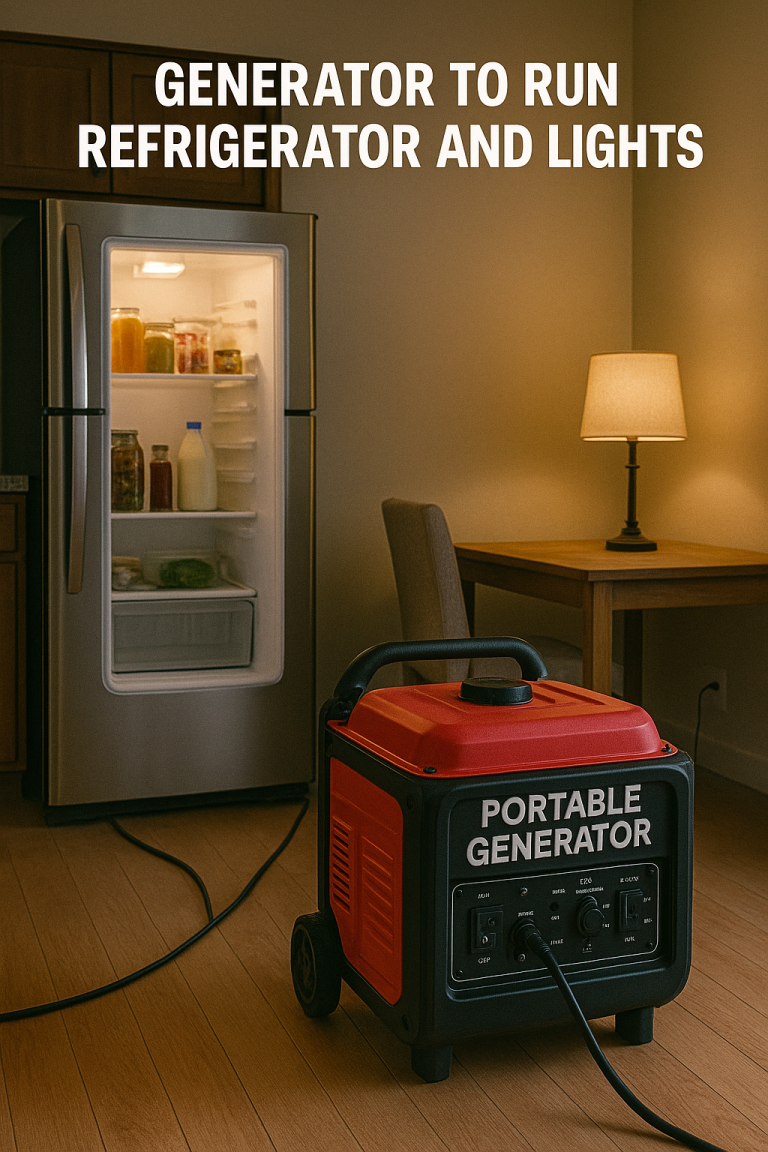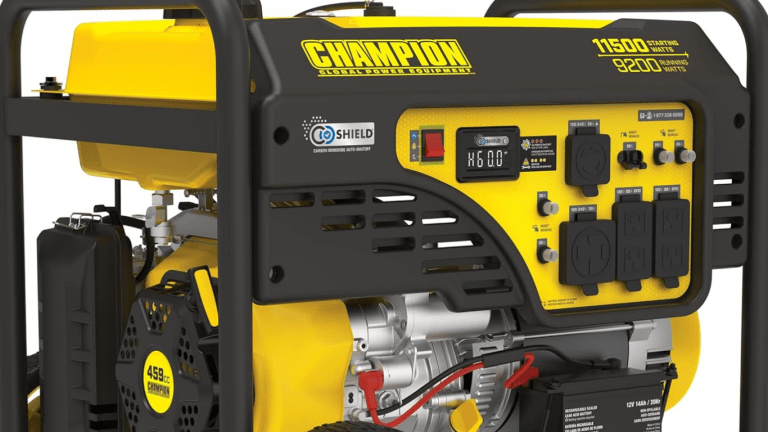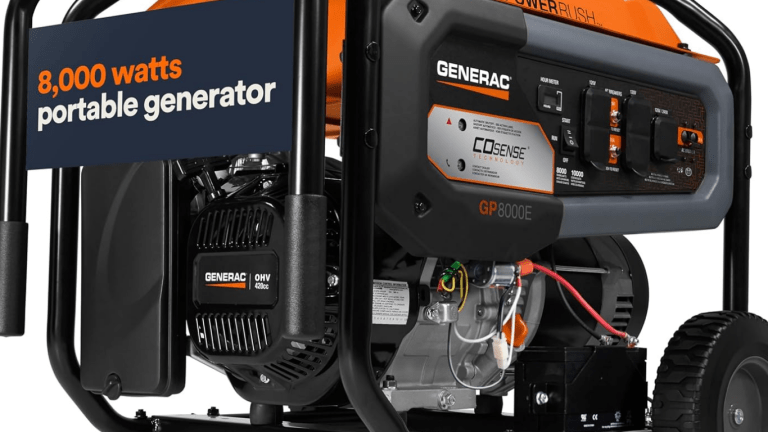Emergency Generator for Refrigerator – Keep Your Food Safe When the Power Goes Out
Power outages are never convenient. Whether caused by storms, utility failures, or grid overloads, losing electricity can quickly turn into a crisis — especially if it affects your ability to keep food safe. That’s why having an emergency generator for your refrigerator is one of the smartest, most practical investments you can make.
If you’ve ever opened your fridge after 12 hours without power only to find spoiled meat, melted ice cream, and wasted groceries, you know the frustration. An emergency generator ensures that your refrigerator keeps running when the grid doesn’t — protecting your food, your wallet, and your peace of mind.
In this guide, we’ll cover everything you need to know about choosing and using the right generator to keep your fridge powered through blackouts and emergencies.
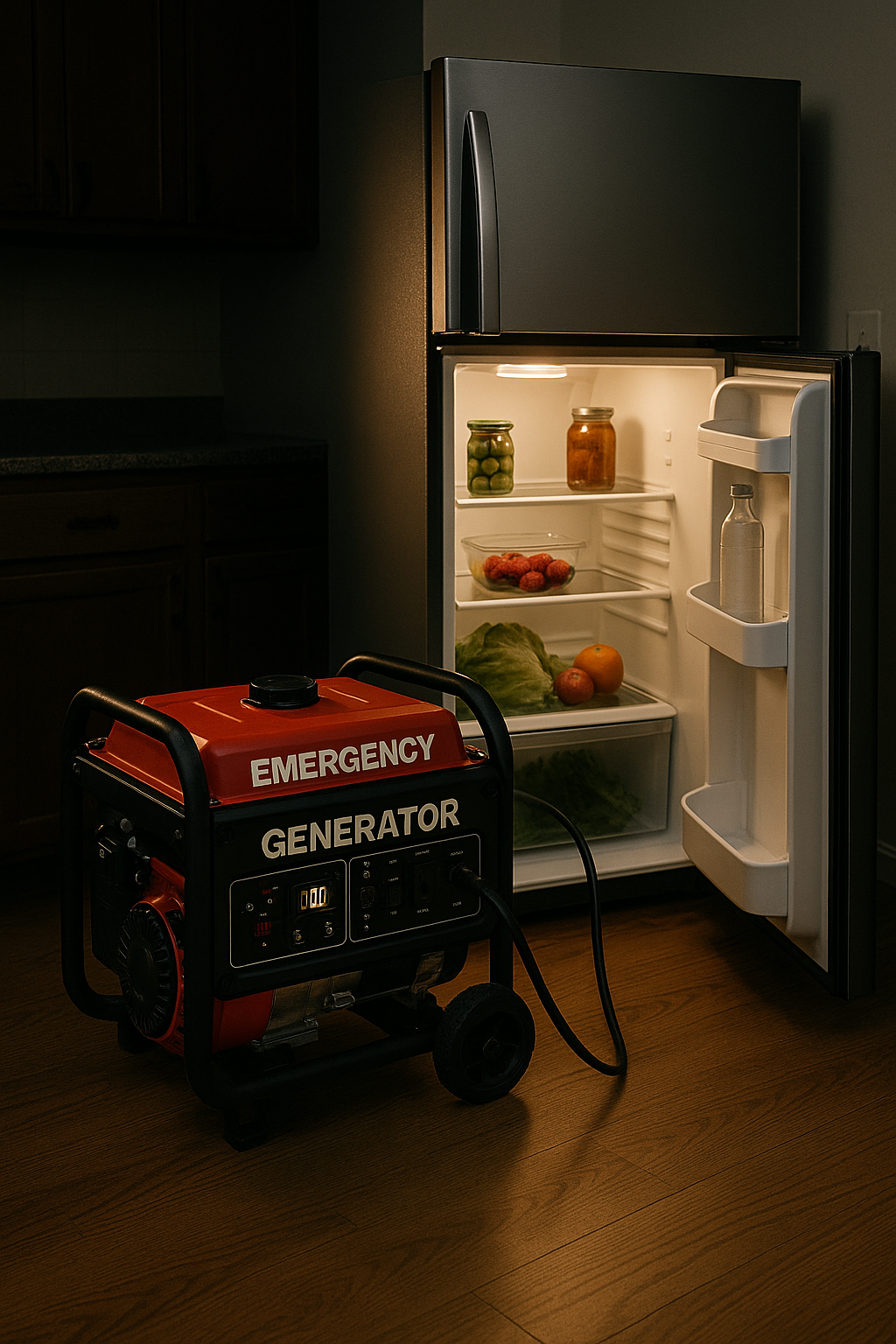
Why You Need an Emergency Generator for Your Refrigerator
Refrigerators and freezers are designed to maintain safe food temperatures — but only as long as they have power. When the electricity goes out, that safety window quickly closes.
After just 4 hours without power, your refrigerator begins warming up. After 24–48 hours, your freezer thaws. By that point, perishable foods become unsafe to eat, and hundreds of dollars in groceries can be lost.
An emergency generator gives you:
- Protection from food spoilage
- Peace of mind during storms and outages
- Reliable power for medication storage (if needed)
- Confidence in long-term preparedness
It’s a small step that offers major reassurance — especially in areas prone to severe weather or grid instability.
How Much Power Does a Refrigerator Need?
Understanding your refrigerator’s power usage is key to choosing the right generator. Most modern household refrigerators use between 600 and 800 running watts, with a startup surge of 1200 to 1500 watts when the compressor kicks in.
That means your emergency generator needs to meet two criteria:
- Surge capacity for that brief high-power startup
- Running wattage to continuously keep the appliance operating
In simple terms, a generator with 1500 to 2000 starting watts and 1000 or more running watts will safely handle most residential refrigerators and freezers.
Always check your fridge’s specifications, usually found on a label inside the door or in the manual, to confirm exact wattage.
What Type of Generator Is Best for Powering a Fridge?
There are several types of generators to choose from. The right one depends on how often you experience outages, how much power you need, and whether you want portability or a fixed setup.
Inverter Generators
These are ideal for emergency home use. They’re quiet, fuel-efficient, and produce clean power that’s safe for appliances and electronics. Inverter generators are compact, easy to store, and offer stable voltage for sensitive devices like modern refrigerators.
They’re the top choice for most people who want a portable and dependable fridge backup generator.
Conventional Gas Generators
More affordable and available in higher wattages, conventional generators can easily run a refrigerator — and then some. However, they’re often noisier, bulkier, and less efficient than inverter models.
If you want to power multiple large appliances at once and don’t mind the extra noise or fuel consumption, this could be a suitable option.
Dual-Fuel Generators
These offer flexibility by running on either gasoline or propane. Propane burns cleaner, stores longer, and is safer to stockpile, making dual-fuel generators a great choice for emergency preparedness.
They combine high output, fuel choice, and extended runtime, which is especially useful during longer outages.
Must-Have Features for an Emergency Fridge Generator
When you’re choosing a generator specifically for your refrigerator, there are a few key features to prioritize:
Adequate Wattage
Make sure the generator can handle both the surge and running wattage of your fridge. It’s better to overestimate than risk overloading your unit during a blackout.
Quiet Operation
If you’re running the generator near your home, choose a model that operates below 60 decibels. This helps avoid disturbing your household or your neighbors, especially during overnight outages.
Fuel Efficiency
Look for generators with eco-mode or variable speed settings, which automatically adjust engine output based on demand. This saves fuel and allows for longer runtimes.
Portability
If you need to move the generator during a storm or emergency, it should have wheels and a carry handle. Smaller inverter models are especially easy to store and move.
Safety Features
A good emergency generator should have overload protection, low-oil shutoff, and CO monitoring. These built-in safeguards keep your appliances — and your family — protected.
Generator Setup Tips for Running a Refrigerator Safely
It’s not just about buying the right generator — it’s about using it correctly. Follow these tips to safely power your fridge during an outage:
Keep the Generator Outside
Never run a gas-powered generator indoors or in a garage. Always operate it at least 20 feet from your home, away from doors or windows, to avoid carbon monoxide buildup.
Use a Heavy-Duty Extension Cord
To connect your refrigerator safely, use a heavy-duty, outdoor-rated extension cord that can handle the wattage load. Avoid using thin or old cords that could overheat.
Let the Fridge Cycle Naturally
Fridges don’t run constantly. They cycle on and off to maintain temperature. If you’re trying to stretch fuel usage, you can manually unplug and rotate other devices while the fridge compressor rests.
Fuel Storage and Readiness
Keep an adequate supply of fuel (gasoline or propane) on hand, stored in proper containers and away from heat or flames. Use stabilizers to keep fuel fresh and check your generator monthly to ensure it starts easily.
Test Your Setup Before an Emergency
Don’t wait until the lights go out. Test your generator with your fridge now, so you know exactly what to expect. This ensures you’re confident and ready when an actual outage hits.
Can You Power a Freezer Too?
Yes — as long as your generator has enough capacity. Upright or chest freezers have similar wattage needs to refrigerators. If you want to run both simultaneously, you’ll need a generator with at least 2500 to 3000 starting watts, depending on the models.
Alternatively, you can rotate power between appliances every few hours to keep them cold without overwhelming your generator.
What About Solar Generators?
For those who want a fuel-free, silent option, solar-powered generators (or portable power stations) are a good backup for short-term outages. However, most consumer-grade solar units don’t provide enough continuous power to run a full-size refrigerator for long periods.
That said, high-capacity battery stations (over 1000 watt-hours) paired with solar panels can support mini-fridges or short bursts of fridge operation, especially during the daytime. They’re worth considering for silent, indoor-safe backup in apartments or small homes.
Final Thoughts: Be Ready for the Unexpected
A reliable emergency generator for your refrigerator isn’t just about saving groceries — it’s about preserving normalcy during chaotic situations. Power outages may be unpredictable, but your preparedness doesn’t have to be.
To recap:
- Know your fridge’s power requirements
- Choose a generator with at least 1500 starting watts
- Prioritize inverter or dual-fuel models for efficiency and safety
- Use proper cords and outdoor placement
- Test everything before the next outage hits
When the lights go out, your food, your comfort, and your peace of mind will be protected — and you’ll be glad you invested in the right solution.

